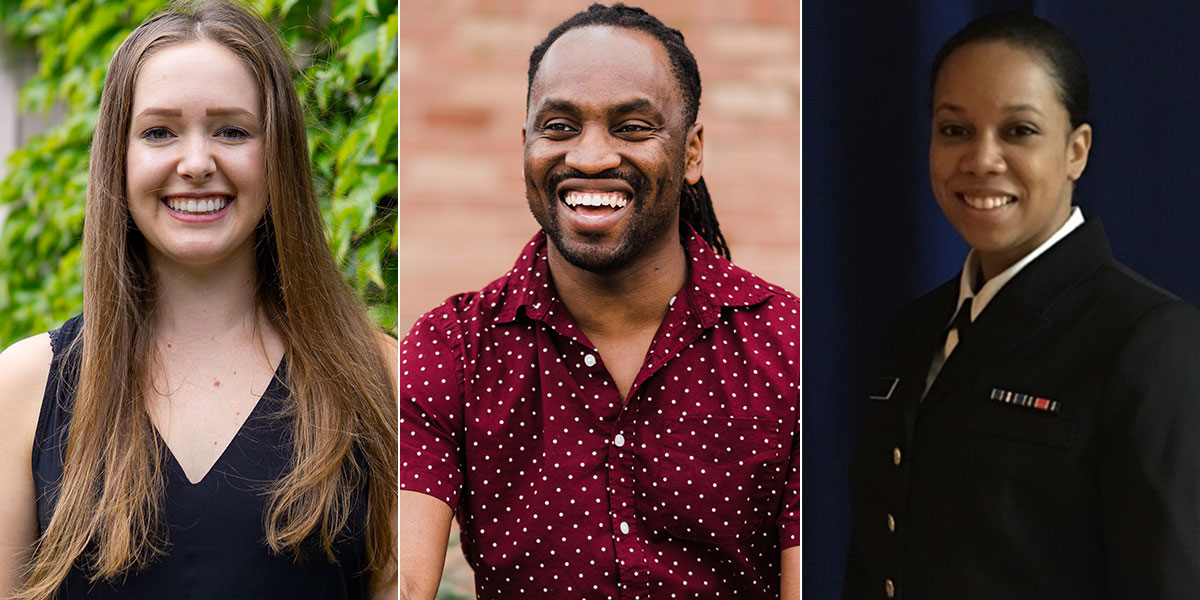Meet 3 Baylor grads leading on the frontlines of public health

Throughout COVID-19, those on the frontlines of healthcare have received well-deserved accolades. Doctors, nurses, first responders, researchers — all have stepped up to address COVID-19-related challenges. But that’s not the only group on the frontlines; environmental and public health professionals are also out there working to protect the health of their neighbors — and much like the more commonly discussed medical fields, Baylor is well-represented in this group.
Part of the reason Baylor sends so many graduates into environmental health leadership is the strength of its environmental health science program — one of the oldest such programs in the nation, and one of only 30 programs nationally to have its bachelor of science program accredited by EHAC, which is recognized by the Center for Disease Control and Prevention (CDC) and the U.S. Public Health Service.
Meet three Baylor environmental health science graduates serving on the frontlines of public health:
Kaitlyn Kelly (BS ’18), air quality policy specialist, Washington State Department of Health
It’s common to hear about wildfires on the West Coast in the news each summer, and Washington state is no stranger to their impact. Kaitlyn Kelly (pictured above left) is the state department of health’s air quality specialist, focusing on wildfire smoke public health response. Kelly’s work combines science, communications and marketing, as she works to make information about wildfire smoke’s impact on health understandable and actionable for Washington residents — a liaison, of sorts, to the public.
When COVID-19 became a public health issue last year, Kelly and her colleagues on the state’s emergency response team had to combine responses to two public health crises at once: wildfires and a pandemic. Despite being younger than many colleagues, Kelly led the development of a statewide guidance for wildfires and a COVID-19 response with specific recommendations for residents. Additionally, her official blog posts provided much-needed public health information to a wide audience.
Matthew Reid (BS ’14), senior environmental health officer, City of Austin Public Health Environment Health Services Division
At restaurants, packaging plants, or any place that handles food, health inspectors are a regular sight, investigating food quality, safe handling and more. Matthew Reid (pictured above center) supervises food and swimming pool inspectors in Austin, a role that’s required him to go from being an inspector himself to a boss and a coach. Reid was promoted to his current role shortly after the start of the pandemic last year, navigating the safety of his own team as they inspected for the safety of the public.
Much of his work is in the spirit of “preventative measures,” seeking to thwart food-borne illness and other challenges that could arise from improper handling. The pandemic required Reid’s team to (successfully) increase its vigilance, watching for individuals who had been exposed to or were suffering from the virus. Additionally, Reid and his team also worked at vaccination distribution clinics on top of their daily roles.
Lt. Capri Woolridge (BS ’14), U.S. Public Health Service training officer, Division of Programmatic Training, U.S. Food & Drug Administration (FDA)
Lt. Capri Woolridge is an active duty officer in the U.S. Public Health Service Commission — “America’s Health Responders.” That means she can be deployed at a moment’s notice for any disaster or challenge that has a public health aspect, from hurricanes to U.S. border issues to COVID-19. Last year, Woolridge (pictured above right) was deployed to the Bay Area when a quarantined cruise ship containing 300+ evacuees returned to land. She and her team provided medical care, personal protective equipment and supplies, and mental health resources to those on board.
Woolridge has also served as a food investigator for the FDA, visiting large food warehouses and production facilities across the West Coast before being promoted to her current role of trainer. She created a new training program for her division, which serves the vital region of California, where much of the nation’s produce is grown.
No matter their role, Reid sums up what drew many of his fellow graduates to the field, and what motivates them still:
“We work in the shadows because we want to help people and help make a difference. We don’t need headlines; it’s a spirit of doing something for the greater good and to make the places we live better.”
Sic ’em, Baylor environmental and public health graduates!

